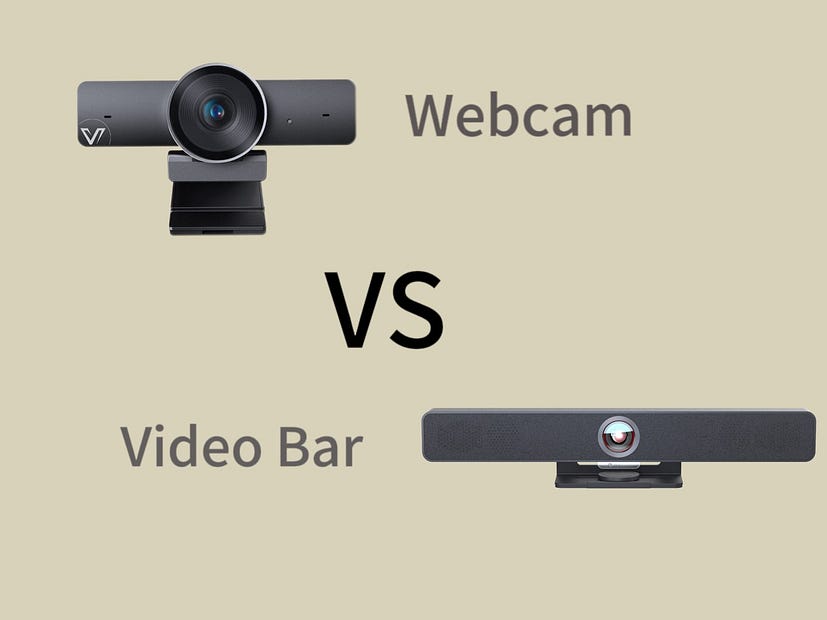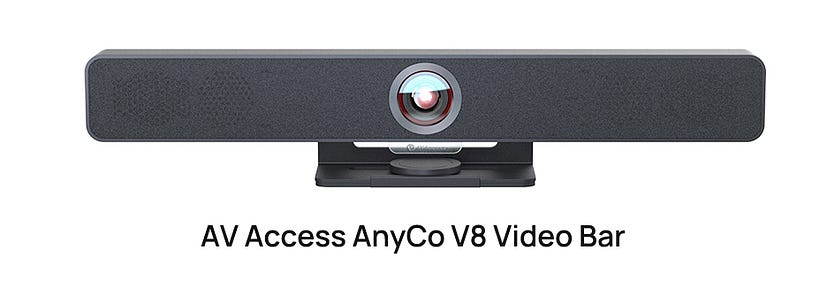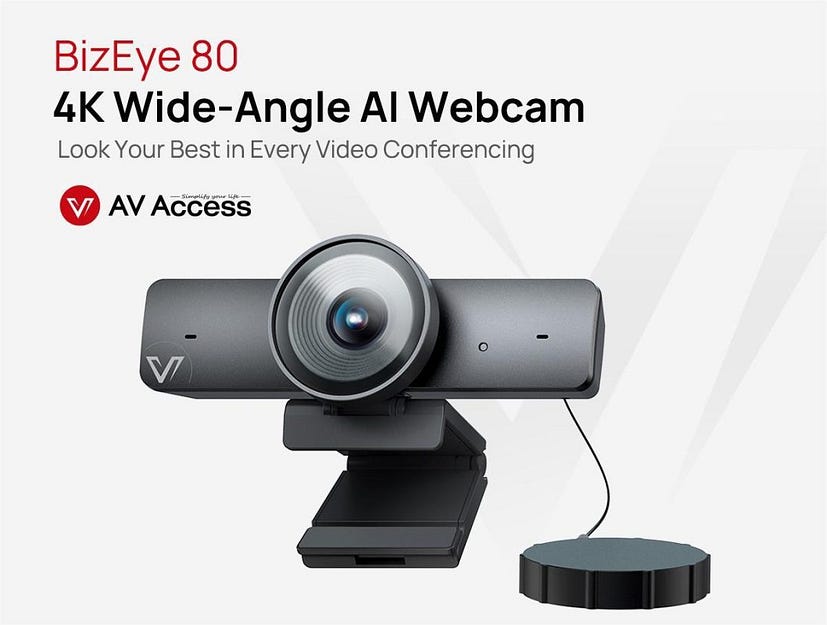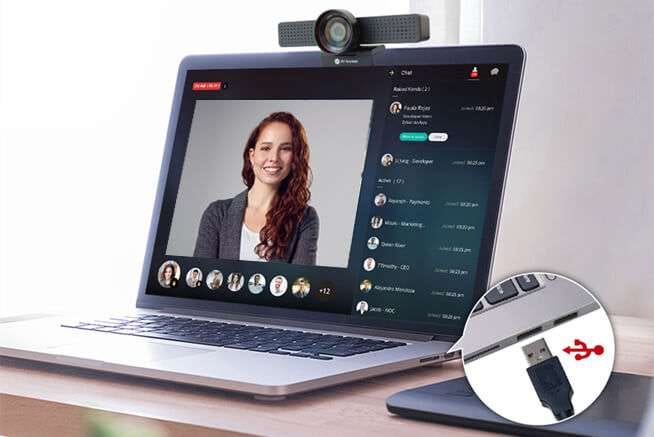
Table of Contents
- Introduction
- What Is a Video Bar?
- What Is a Webcam?
- Differences Between Video Bars and Webcams
- Device Shape and Design
- Installation and Setup
- Video and Audio Quality
- Suitable Scenarios and Scale
- Compatibility and Integration
- Advantages of Video Bars
- Comprehensive Video Conferencing Solutions
- Superior Audio Quality
- Versatility and Convenience
- Professional Look and Setup
- Flexible Positioning
- Advantages of Webcams
- Flexibility and Portability
- Relatively Lower Price Point
- Suitable for Personal and Small-Scale Meetings
- How to Choose the Right Device
- Consideration of Meeting Room Requirements and Scale
- Budget Considerations
- Integration and Compatibility Requirements
- Conclusion
- More Resources
Introduction
In the era of remote work and virtual meetings, the choice between a video bar and a webcam can significantly impact the quality and effectiveness of your video conferences. Understanding the differences between these two devices is crucial for making an informed decision that aligns with your specific needs. In this blog, we’ll delve into the distinct features, advantages, and considerations associated with video bars and webcams.
What Is a Video Bar?

A video bar is a comprehensive video conferencing solution that combines multiple audio and video components into a single device. It is designed to enhance the audio and visual experience of video meetings in conference rooms or huddle spaces.
What Is a Webcam?

A webcam, short for “web camera,” is a digital camera that captures video and audio. It is primarily used for video communication and broadcasting over the internet. Webcams are typically small, compact devices that can be attached to a computer or placed on a monitor or desk. They are commonly integrated into laptops, tablets, and smartphones.
Differences Between Video Bars and Webcams
Device Shape and Design
Video bars are larger and designed to serve as a centralized component within a meeting room setup, offering a comprehensive solution that encompasses both video and audio functionalities. On the other hand, webcams are comparatively more compact and can be conveniently attached to laptops or monitors.
Installation and Setup

Video bars typically require more extensive installation, often involving mounting on walls or a bracket. They are designed to be used in permanent meeting spaces where a dedicated video conferencing setup is desired. In contrast, webcams are plug-and-play devices that can be easily connected to a computer or laptop via USB. This makes webcams more suitable for quick and temporary setups, such as ad-hoc meetings or personal use.
Video and Audio Quality
Video bars are specifically designed to meet the demands of larger meeting rooms and can capture a wider field of view, ensuring that participants are well-visible and the overall meeting experience is immersive. On the other hand, webcams offer good quality for personal use or small-scale meetings. While they can provide satisfactory video and audio performance, they may not possess the advanced features and capabilities found in video bars.
Suitable Scenarios and Scale

The design and features of video bars are specifically tailored to meet the needs of such environments, offering high-quality video and audio performance, advanced functionalities, and seamless integration with conferencing systems. On the other hand, webcams provide a convenient and cost-effective solution for individuals or small groups who require video communication capabilities but may not have the need or resources for a dedicated video conferencing setup.
Compatibility and Integration
Video bars are often part of a broader conferencing system, ensuring seamless integration with various collaboration tools. Webcams are standalone devices, offering flexibility but may require additional peripherals, such as external microphones or speakers, to optimize their performance for larger or more professional settings.
Advantages of Video Bars
Comprehensive Video Conferencing Solutions
Video bars offer a holistic approach to video conferencing by providing integrated solutions for video, audio, and often content sharing. This comprehensive approach streamlines the meeting experience and significantly enhances productivity.
Superior Audio Quality
The advanced microphone arrays in video bars contribute to superior audio quality, reducing background noise and ensuring clear communication. This is particularly crucial for large meetings. It’s important to note that video bars are engineered to offer enhanced functionalities and features, such as noise cancellation, automatic framing, and integration with professional conferencing systems. These advanced capabilities contribute to a more seamless and productive meeting experience, particularly in larger conference settings.
Versatility and Convenience

One of the key advantages of video bars is their versatility, allowing them to adapt to different meeting room sizes and setups. Whether it’s a small huddle room or a large conference space, AV Access AnyCo V8 video bar can connect up to 3 AnyCo M1 microphones, enabling effortless expansion of its pickup range.
Professional Look and Setup
The design of video bars is often sleek and modern, complementing the aesthetics of a professional environment. The AV Access AnyCo V8 video bar features a sleek and minimalist design that resembles a bar.
Flexible Positioning
The bar-like shape of the AV Access AnyCo V8 video bar also serves a practical purpose. It allows for easy placement and installation in different meeting spaces, whether it’s mounted on a wall, placed on a tabletop, or integrated into a larger audiovisual setup.
Advantages of Webcams
Flexibility and Portability
Indeed, webcams are highly portable and adaptable, making them an excellent choice for remote workers or individuals who require flexibility in their video conferencing setup.
Relatively Lower Price Point
Webcams are available at various price points, ranging from budget-friendly options to higher-end models with advanced features. The AV Access BizEye80 4K AI webcam costs only $119 at our shop.
Suitable for Personal and Small-Scale Meetings
Webcams are well-suited for personal use or small-scale meetings, providing ample quality for less demanding scenarios where extensive conferencing features are not necessary.
How to Choose the Right Device
Consideration of Meeting Room Requirements and Scale
- For larger, professional settings such as boardrooms, conference rooms, or auditoriums, where you have a significant number of participants or a larger physical space, a video bar would generally be the ideal choice.
- For personal offices or smaller meeting rooms with a limited number of participants, webcams are more suitable. Webcams offer a cost-effective and convenient solution for smaller spaces. They are compact, portable, and easy to set up, making them ideal for personal use or small-scale meetings.
Budget Considerations
The decision between video bars and webcams should consider your specific budget constraints and the level of conferencing features and performance required for your business needs. Video bars are an investment for businesses prioritizing advanced conferencing features, while webcams provide a cost-effective solution for smaller setups.
Integration and Compatibility Requirements
Consider your existing collaboration tools and infrastructure. Video bars integrate into existing conferencing systems and infrastructure, supporting advanced connectivity options and features like content sharing and room automation. Webcams offer standalone compatibility, connecting via USB and working with various devices and operating systems.
Conclusion
In the dynamic landscape of video conferencing, the choice between a video bar and a webcam ultimately depends on your specific needs and constraints. Both devices have their merits, catering to different scenarios and scales. By understanding the differences and weighing the advantages, you can make an informed decision that enhances the quality and effectiveness of your virtual meetings.
More Resources
You may be also interested in other blogs:
- 12 Reasons Why You Need a Video Bar for Your Conference Room
- Video Bar: Everything You Need to Know before Buying
- 3 Most Common Video Conferencing Problems and Solutions
- 7 Key Factors to Build a Productive Hybrid Workplace
- 7 Tips to Design Your Huddle Room for Better Collaboration
- Top 3 Wireless Screen Sharing Solutions for Your Meeting Room

